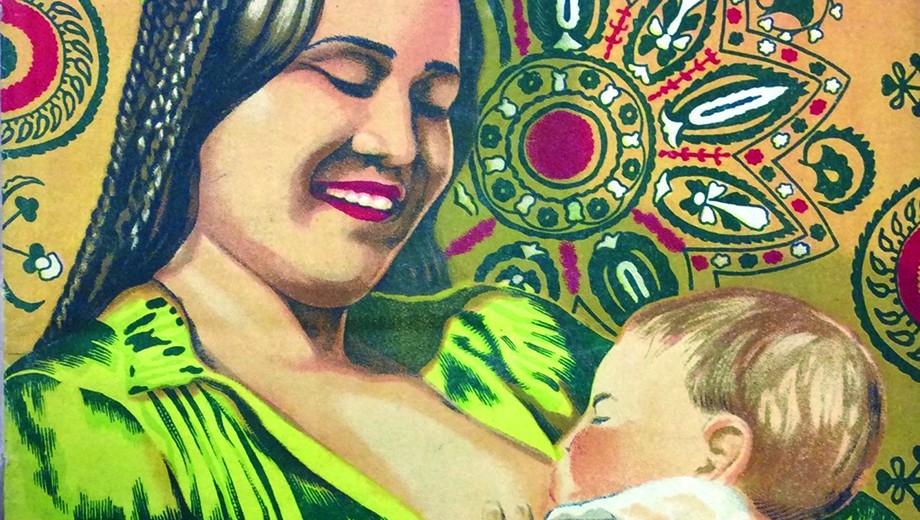Claire Roosien has been immersed in her current area of study for nearly her entire life.
Now an assistant professor of Slavic languages and literatures at Yale, Roosien, AB’10, AM’17, PhD’19, spent her early childhood shuttling between Ohio and Pakistan, where her parents worked for various nongovernmental organizations. When she was 10, her parents got jobs working for an NGO in Samarkand, Uzbekistan, and the family remained there until Roosien went to college. Since Samarkand had no English-language schools, she attended an Uzbek-language school and a Russian-language school in addition to taking online classes in English.
Growing up in the former Soviet republic, she became interested in Russian art and literature. As a double major at UChicago in Slavic Languages and Literatures and Fundamentals: Issues and Texts, she had to write two undergraduate theses. She decided to write one on Dostoevsky, but when it came time to write the second, she realized the extent to which she’d focused on “the big names of Russian literature: the ‘Tolstoyevsky,’ as they like to call it,” at the expense of some of the writers and artists of central Asia. During a class on Anton Chekhov, Roosien thought back to Abdulla Qahhor, a Soviet-era writer she’d read in Uzbek school.
“A lot of his stories are an answer, from a central Asian perspective, to Chekhov,” she says. Like Chekhov’s stories, they illuminate personal dramas, but they feature a cast of Uzbek characters rather than Russians. Roosien decided to write her second thesis on Qahhor, “and that kind of kicked me off on this whole journey.”
Though Roosien is too young to remember when the Soviet Union existed, she—like most Westerners—had a perception of it as uniformly totalitarian and repressive in all facets of life, including art and culture.
“That’s not an entirely false narrative,” Roosien says. “But what’s interesting about Qahhor is that although he works within the Soviet system, he produces something of his own within the space the state creates for cultural participation.”
The Soviet Union, and the Russian Empire before it, extended well beyond Russia proper, encompassing vast swaths of land full of diverse languages and cultures. And yet the perception of these sprawling geopolitical conglomerates doesn’t always reflect their diversity. When looking through library cataloging systems, some of which date back to the Cold War era, Roosien says, “stuff is categorized as Russian that isn’t remotely Russian at all.”
As an example of a non-Russian Soviet cultural creator, Qahhor is among the figures Roosien explores in her book in progress, tentatively titled “Socialism Mediated: Culture, Propaganda, and the Public in Soviet Central Asia.” Roosien is interested in how, during that period, “people on the ground interpret socialism for a central Asian context.”
Another example is activist and collective farmer Tojixon Shodieva, an Uzbek woman whom Roosien calls “the biggest celebrity in 1930s central Asia.” Shodieva was often the face of a Soviet movement urging women in Uzbekistan, which is predominantly Muslim, to remove their veils. Roosien examines depictions of Shodieva in popular Uzbek culture, including poems and films, about her as a persona as well as a person.
The project also examines different cultural media, as well as figures such as musicians, writers, artists, and activists.
“The only way we can really understand these artifacts I work with,” she says, “is by recognizing them not just as expressions of a slogan from Stalin, but as creative products in their own right.”
UChicago proved to be the ideal institution for Roosien to dig further into central Asian studies in her graduate work. One reason the University is “remarkably well equipped” for the field is that, while few institutions offer central Asian languages, UChicago offers Uzbek, Kazakh, Turkish, and Persian—the latter two of which are particularly important for central Asia. (Roosien is fluent in Russian and Uzbek, can read and speak enough Persian and Turkish for research, and has some reading skills in Greek and Chuvash.)
Already familiar with the Slavic department, she was also drawn to the University of Chicago’s renowned program in Soviet and Russian history. The particular focus of the University’s Near Eastern Languages and Civilizations department suited her research as well. While many similar departments at other schools focus on the Arabic world, NELC’s strength in Ottoman Turkish and Persianate studies provided an ideal base for Roosien.
“That collection of different strands that weave together in central Asian history and culture,” Roosien says, “is also present in the University of Chicago as an institution.”
A final bonus was UChicago’s library collection on central Asia. “I can probably count on one hand the number of libraries in North America that have that kind of a collection,” she says. “And I miss it a lot.”
By the time Roosien entered UChicago’s doctoral program in 2012, she knew that “a PhD in the humanities in an obscure cultural context was not likely to be a fast-track to an awesome job.”
Her graduate work—ultimately becoming a joint PhD in NELC and Russian-Soviet history—did in fact lead to a tenure-track position, but she weighed the risks. “The calculation that I made,” she says, “and that I honestly still make is [this]: Am I enjoying what I’m doing now? Am I making sacrifices that I would regret making if it didn’t work out? And I just refuse to make those sacrifices.”

